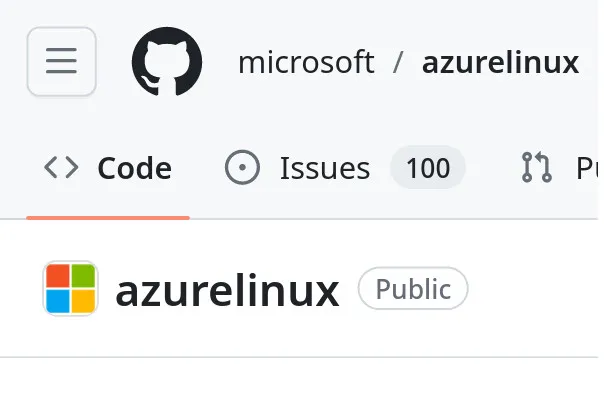Finally. I was always wondering why they didn’t name it Azure Linux in the first place.
If there is one thing Microsoft is struggling with it’s naming things. I work mostly with .NET and the regular renaming of products is just something you have to put up with. 🤷
This is so true. We can see it with their Xbox game consoles as well: Xbox, Xbox 360, Xbox One, Xbox One S, Xbox One X, Xbox Series S, Xbox Series X. I’m genuinely curious to see what comes next. Windows also was not very consistent in their naming: 3.11 (version numbering), 95 (suddenly year based), 98, 2000, Me (suddenly abbreviations or words based), XP, Vista, 7 (suddenly number based), 8, 10 (suddenly leaving out number 9), 11, 12. What a roller coaster.
And that’s only speaking about two line of products…
Actually, you’re speaking about three product lines: Xboxes, regular old Windows, and Windows NT. Hence also the weird contortions with Windows Me (“Millennium Edition”): They couldn’t name it Windows 2000, because that version had been released half a year earlier. They couldn’t really name it Windows 2001 either, because that would have implied it being better than (or even related to) Windows 2000.
They could’ve sold Windows 2000 as Windows NT 5 and Windows Me as Windows 2000; that would’ve kept the “NT X” versioning scheme for the professional line and the year-based scheme for the consumer line.
But the versioning scheme for the NT line is all kinds of weird in general. Windows 7 is NT 6.1. Windows 8 is NT 6.2. So we’ve established that the product name is independent of the version now. That means that Windows 10 is NT… 10.0. Windows 11 is also NT 10.0.
Okay.
They could’ve sold Windows 2000 as Windows NT 5 and Windows Me as Windows 2000; that would’ve kept the “NT X” versioning scheme for the professional line and the year-based scheme for the consumer line.
That’s true of course. But iirc, Microsoft itself was on the fence of whether to release Me at all or whether to go straight to what would become XP, the release that united both lines of Windows. I guess that might explain somewhat why the NT product people felt it ok to steal the year-based versioning scheme of DOS-based Windows…?
True, although that made people think that Windows 2000 was the intended successor to Windows 98 – me included. Not that I minded; in my opinion Windows 2000 was straight up better than Windows XP until XP SP2 came out. Anyway, Microsoft spends far too much time getting cute with version numbers.
That means that Windows 10 is NT… 10.0. Windows 11 is also NT 10.0.
And likely windows 12 as well…
And versions of windows 10/11 have the same issue too… v1507, because it was released in July 2015
v1511, Nov 2015
v1607, Aug 2016
v1703, April 2017
v1709, Sep 2017… wait… oh no that’s Oct (17th) 2017 (actual, but close enough)
v1803, April 2018
v1809, Sep 2018… god damnit, I mean Nov 2018 (actual, 2 months later?)
v1903, May 2019
v1909 Nov 2019
v2004, May 2020
v20H2, Hoctober 2020
v21H1, Hmay 2021
v21H2, Hnovember 2021
v22H2, Hoctober 2022…Windows 11 isn’t any better
21H2
22H2
23H2
24H2It’s just a mess… it was “good” for a while then turned to straight shit… Where the fuck is 22H1? I consider 2004 supposed to be 20H1…Why even bother with the H2 for Windows 11 at all? There’s never an H1… They don’t correspond to build numbers or anything like that at this point anyway. I think it’s supposed to correspond to halfyears? What happens when they have to push a second version in the second half of the year? Do we get 24H2v2?
I hate companies that fucking change their versioning more than once per product.
More like .NOT amirie guise
It’s opensource, strongly typed, works very well on Linux, its neither Java nor JavaScript and there are lots of jobs available; so you wont hear me complaining.
Because Microsoft is terrible at naming things. Just look at
Azure ADEntraADWindows Intune -> Microsoft Intune -> Microsoft Endpoint Manager -> Microsoft Intune
Then have a look in all defender plans and renamings… Holy shitballs
And that absurdity of a name that was Microsoft Endpoint Manager Configuration Manager aka MEMCM. Just eew.
Also
YammerViva Engage
What are the positive qualities of Microsoft Linux? I’m sure it is more stable than normal Windows, but I’m not sure I could ever trust it as an OS.
Its for their cloud instances. Just like you wouldn’t actually run Amazon Linux. If you’re using their cloud platform it’s absolutely the best option, but in all other scenarios you wouldn’t think to touch it
I don’t think it’s comparable to Amazon Linux even, it’s more infrastructure oriented. From the Wikipedia page:
CBL-Mariner is being developed by the Linux Systems Group at Microsoft for its edge network services and as part of its cloud infrastructure.[5] The company uses it as the base Linux for containers in the Azure Stack HCI implementation of Azure Kubernetes Service
This is the best summary I could come up with:
Microsoft’s in-house Linux distribution used for a variety of purposes had been known as CBL-Mariner for “Common Base Linux” while now it appears to be in the process of transitioning to Azure Linux.
Not to be confused with Microsoft’s Azure Sphere Linux-based OS as a platform for IoT/microcontroller use, Azure Linux is evolving out of CBL-Mariner.
With releasing today CBL-Mariner 2.0.20240301, it’s now redirecting to the project Microsoft/AzureLinux on GitHub.
The CBL-Mariner repository has been renamed to “AzureLinux” and other references to CBL-Mariner have been transitioned to Azure Linux branding as well while some CBL-Mariner marks remain.
Within the new v2.0.20240301 release are also some source updates beginning to rename artifacts such as going from “MARINER_VERSION” to “AZL_VERSION” for Azure Linux.
It will be interesting to find out the motivation for this apparent re-branding / evolution of CBL-Mariner now to Azure Linux and if Microsoft will be better positioning their in-house Linux platform publicly or what other changes may be coming down the pipe for Azure Linux.
The original article contains 167 words, the summary contains 167 words. Saved 0%. I’m a bot and I’m open source!
Saved 0%
Yeah, that’s funny.
I considered opening an issue, having assumed that this was a bug and in such cases the bot might as well not comment at all, but apparently part of its intended purpose is saving people from having to open articles.
Not sure how I feel about that, to be honest.
Not sure how I feel about that, to be honest.
You should despise it (though I won’t judge you if you don’t). It makes people reliant on the bot rather than reading the fucking article. The only time a bot like this is useful is if the article is paywalled. The bot will miss pieces of the article that matter to the context of the whole situation, up to and including details like “Who” wrote the fucking thing… or “when” it was published. That context data matters a lot.
Cool. I will still not be using it.
you’re not supposed to anyway. it’s used for internal azure infrastructure
I won’t be using Azure either though, so not even tangentially.











